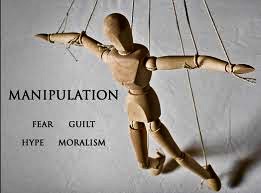
In certain situations, there is a presumption of undue influence as per the following quote from the SCC in Geffen v Goodman Estate ( 1991) 2 SCR 353, para 41.
Following the Geffen quote is a portion of the decision of Stewart v McLean 2010 BCSC 64 that sets out the criteria to rebut a presumption of undue influence.
Geffen v. Goodman Estate is the leading case on the presumption of undue influence for inter vivos transfers. The following paragraphs of the decision set out the mechanics of how the presumption is applied:
- What then must a plaintiff establish in order to trigger a presumption of undue influence? In my view, the inquiry should begin with an examination of the relationship between the parties. The first question to be addressed in all cases is whether the potential for domination inheres in the nature of the relationship itself. This test embraces those relationships which equity has already recognized as giving rise to the presumption, such as solicitor and client, parent and child, and guardian and ward, as well as other relationships of dependency which defy easy categorization.
- Having established the requisite type of relationship to support the presumption, the next phase of the inquiry involves an examination of the nature of the transaction…Geffen v. Goodman Estate, [1991] 2 S.C.R. 353, para. 41 (“Goodman Estate”)
- 46 Once the plaintiff has established that the circumstances are such as to trigger the application of the presumption, i.e., that apart from the details of the particular impugned transaction the nature of the relationship between the plaintiff and defendant was such that the potential for influence existed, the onus moves to the defendant to rebut it. As Lord Evershed M.R. stated in Zamet v. Hyman, supra, at p. 938, the plaintiff must be shown to have entered into the transaction as a result of his own “full, free and informed thought.” Substantively, this may entail a showing that no actual influence was deployed in the particular transaction, that the plaintiff had independent advice, and so on. Additionally, I agree with those authors who suggest that the magnitude of the disadvantage or benefit is cogent evidence going to the issue of whether influence was exercised.
- The test to rebut the presumption of undue influence is summarized nicely by Punnet J. in the case of Stewart v. Mclean, 2010 BCSC 64
To rebut the presumption of undue influence, the defendant must show that the donor gave the gift as a result of her own “full, free and informed thought”: Geffen at 379. A defendant could establish this by showing:
:a. no actual influence was used in the particular transaction or the lack of opportunity to influence the donor {Geffen at 379; Longmuir at para. 121);
.the donor had the ability to resist any such influence (Calbick v. JVarne, 2009 BCSC 1222 at para. 64);
undue delay in prosecuting the claim, acquiescence or confirmation by the deceased (Longmuir at para. 76).
Another relevant factor may be the magnitude of the benefit or disadvantage (Geffen at 379; Longmuir at para. 121).
the donor knew and appreciated what she was doing (Vout v. Hay, [1995] 2 SCR. 876 at para. 29,125D.L.R. (4th) 431); or
The donor had independent advice or the opportunity to obtain independent advice (Geffen at 379; Longmuir at para. 121);



